
Roots
Our strands, each one a delicate helix, carry more than mere biological information. They bear the quiet whispers of heritage, the resilience of generations, and the subtle narratives of self. From the very moment we enter the world, our hair begins its silent conversation with us, a dialogue that deepens as we grow.
For those whose hair coils and curves with a distinct texture, this conversation often extends beyond personal reflection, meeting the sometimes unyielding gaze of societal expectations. Hair policies, whether written into corporate handbooks or subtly woven into cultural norms, often intersect with this deeply personal relationship, shaping how one perceives their own crowning glory and, by extension, their place in the wider world.
The very anatomy of textured hair, with its unique follicular structure and growth pattern, renders it distinct. Unlike straight hair, which typically emerges from a round follicle, coily strands often spring from elliptical or even ribbon-like follicles. This shape influences the hair shaft’s cross-section, contributing to its characteristic spirals and zig-zags.
Such structural differences mean textured hair requires particular care and understanding, often demanding approaches that diverge significantly from those suited for other hair types. When policies fail to acknowledge these inherent differences, they inadvertently create friction, turning a biological reality into a point of contention.
Hair policies, both explicit and implicit, profoundly shape individual self-perception and access to opportunities, particularly for those with textured hair.

Hair’s Physical Manifestations
The physical manifestation of hair discrimination often begins with a fundamental misunderstanding of textured hair’s nature. What might be perceived as ‘unruly’ or ‘unprofessional’ is, in fact, the hair’s natural state, its inherent pattern. This misperception then solidifies into policies that dictate acceptable appearances, frequently favoring straightened or chemically altered styles. Such dictates ignore the potential for damage that repeated manipulation, especially heat or chemical treatments, can inflict upon delicate textured strands.
- Follicle Shape The elliptical or flattened shape of the hair follicle for textured hair creates the characteristic curl pattern, making it more prone to dryness and breakage compared to round follicles.
- Cuticle Integrity The cuticle layers of coily hair can lift more readily, increasing vulnerability to environmental stressors and reducing its ability to retain moisture.
- Growth Patterns Textured hair often grows in a denser configuration, creating volume and requiring specific detangling and styling techniques to prevent tangling and matting.
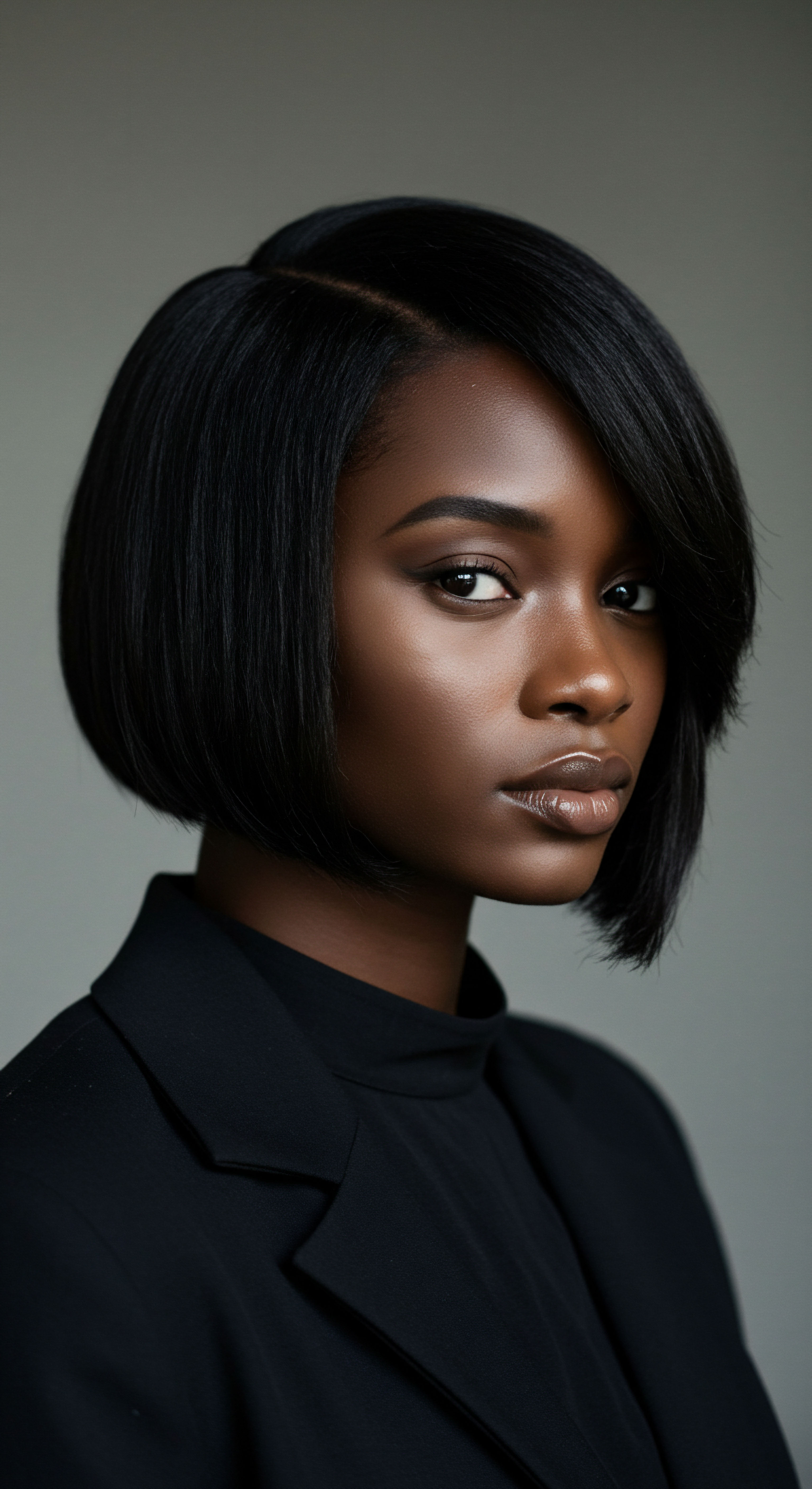
Classifying Textured Hair Patterns
For generations, systems have sought to categorize hair, from the simple distinctions of ‘straight’ and ‘curly’ to more granular classifications like the Andre Walker Hair Typing System (Type 1 to Type 4, with sub-categories A, B, C). While these systems aim to provide a common language for understanding hair characteristics, they can also, at times, inadvertently contribute to a hierarchy of perceived desirability. When policies, either explicitly or implicitly, favor certain hair types over others, they often align with these classifications, consciously or unconsciously marginalizing those whose hair falls outside the preferred range. This subtle privileging of one hair type over another can create a climate where the natural state of textured hair is seen as something to be ‘managed’ or ‘corrected’ rather than celebrated.
| System Category Type 1 Straight |
| Hair Characteristics No curl pattern, often fine or coarse |
| Potential Societal Bias Often seen as the default, 'professional' standard in many Western contexts. |
| System Category Type 2 Wavy |
| Hair Characteristics S-shaped waves, can be fine or coarse |
| Potential Societal Bias Generally accepted, but can be pressured to 'smooth out' for formality. |
| System Category Type 3 Curly |
| Hair Characteristics Loose to tight curls, distinct spiral pattern |
| Potential Societal Bias May face pressure to reduce volume or define curls for a 'neat' look. |
| System Category Type 4 Coily |
| Hair Characteristics Tight coils, zig-zag pattern, can appear densely packed |
| Potential Societal Bias Most frequently subjected to scrutiny and deemed 'unprofessional' without styling. |
| System Category Societal interpretations often prioritize conformity, impacting self-esteem and opportunity for those with non-Type 1 hair. |
The vocabulary used to describe textured hair also carries significant weight. Terms like ‘nappy’ or ‘unruly,’ steeped in historical prejudice, have been used to denigrate and control. Even seemingly neutral descriptors, when applied within a discriminatory context, can reinforce negative stereotypes.
Conversely, a lexicon that celebrates the beauty and versatility of textured hair—terms like ‘coils,’ ‘spirals,’ ‘crown,’ ‘defined,’ ‘voluminous’—can foster a sense of pride and belonging. The shift in language reflects a broader societal awakening, recognizing that hair is not merely an aesthetic choice, but a deeply rooted aspect of identity.

Ritual
To tend to textured hair is to engage in a ritual, a series of thoughtful practices that extend beyond mere cleanliness. This daily or weekly engagement with one’s strands becomes a quiet conversation, a moment of connection. When external policies interfere with these personal rituals, they disrupt not only hair health but also the profound sense of self-care and identity that these practices cultivate. Consider the daily decisions ❉ what products to use, which techniques to apply for definition or protection, how to prepare for sleep.
Each choice is a deliberate step in a dance of nourishment and presentation. Yet, the shadow of policy can loom large, forcing individuals to prioritize conformity over the true needs of their hair, sometimes at the expense of its vitality and their inner peace.
The art and science of textured hair styling are vast, encompassing a spectrum of techniques designed to honor its unique properties. Protective styles, for instance, are not merely aesthetic choices; they serve a crucial purpose in shielding delicate ends from environmental stressors and reducing manipulation, thereby promoting length retention and overall hair health. Braids, twists, cornrows, and buns, among others, serve as guardians, allowing the hair to rest and flourish.
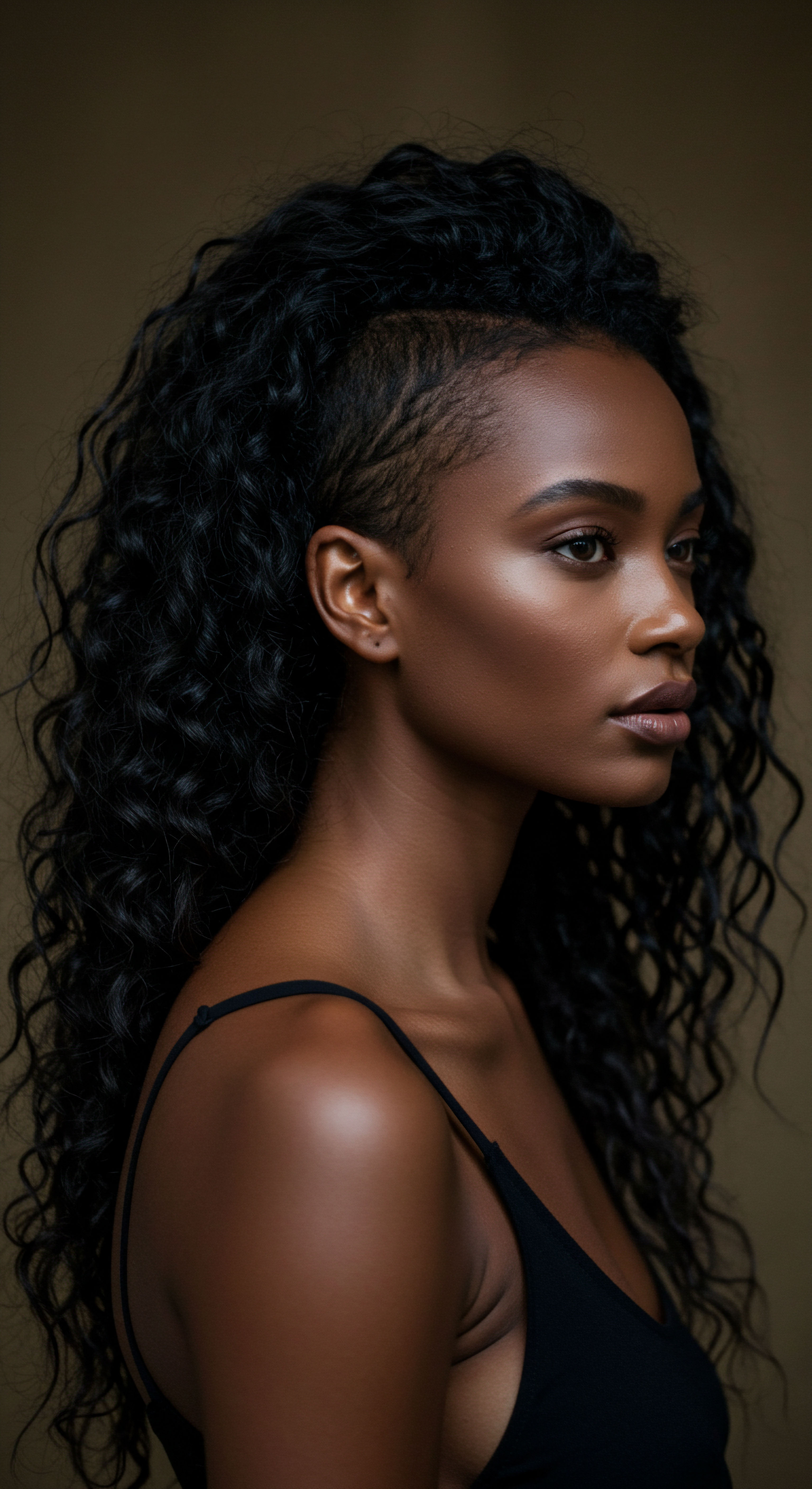
Protective Styling Choices
However, the very styles that offer protection and celebrate cultural heritage are often the targets of restrictive hair policies in schools and workplaces. A young student might be sent home for wearing braids deemed ‘distracting,’ or a professional denied a promotion because their locs are considered ‘unprofessional.’ These policies fail to grasp the fundamental protective and cultural significance of such styles, reducing them to mere fashion statements, or worse, symbols of defiance. This external judgment can force individuals to choose between their hair’s health and their academic or professional advancement.
- Braids offer a long-lasting protective style, reducing daily manipulation and promoting growth.
- Twists provide a gentler alternative to braids, allowing for easy access to the scalp for moisture.
- Buns and Updos can minimize exposure to elements and reduce friction, particularly for longer textured hair.
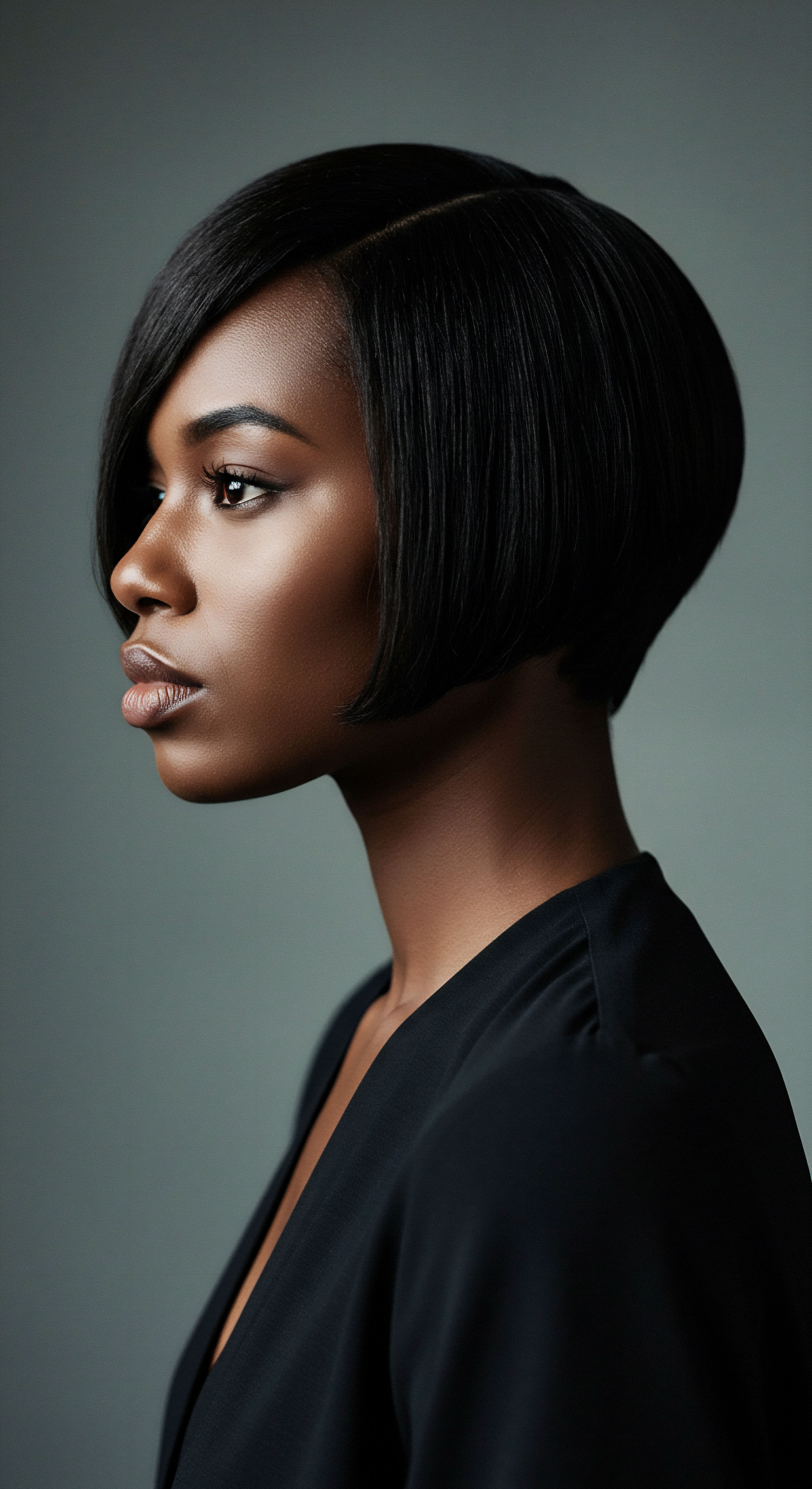
How Do Styling Policies Affect Personal Expression?
The impact on self-esteem is tangible. When a child is told their natural hair is ‘unacceptable,’ or an adult faces implicit bias for wearing a style that honors their ancestry, it sends a clear message ❉ a part of who you are, a visible aspect of your identity, is not welcome. This can breed feelings of shame, inadequacy, and a pressure to conform to an aesthetic that may not suit their hair type or cultural background. The continuous pressure to straighten or alter natural textures, often involving heat or chemicals, not only damages the hair but also chips away at one’s sense of authenticity.
Beyond protective styles, natural styling techniques aim to define and enhance the hair’s inherent curl pattern. Wash-and-gos, curl creams, and diffusing methods are all part of this lexicon. Wigs and hair extensions, while offering versatility and creative expression, also become a means of navigating discriminatory policies.
For some, they offer a shield, a way to present a ‘conforming’ appearance while their natural hair thrives underneath. For others, they are simply an extension of their personal style, yet even these can fall under scrutiny if deemed ‘too much’ or ‘unnatural’ by arbitrary standards.
The pursuit of ‘professionalism’ often leads to an over-reliance on heat styling or thermal reconditioning. While these techniques can temporarily straighten textured hair, they carry a significant risk of damage, including heat damage and breakage. When policies push individuals towards these methods, they are, in essence, coercing them into practices that compromise their hair’s long-term health.
The tools of textured hair care—wide-tooth combs, satin bonnets, micro-fiber towels—are chosen for their gentle approach, designed to respect the hair’s fragility. When the need to meet an external standard overrides the knowledge of proper care, the hair, and the individual, suffer.

Relay
How do the subtle currents of hair policy extend beyond the visible strand, permeating the very fabric of self-perception and career trajectory? This inquiry compels us to consider the profound, often unacknowledged, interplay between appearance, societal acceptance, and the doors that open or remain closed. It is a dialogue that transcends mere aesthetics, delving into the psychological costs and economic ramifications of an unspoken curriculum of conformity.
The journey of understanding here requires us to synthesize observations from various fields, recognizing that a policy governing hair is rarely just about hair. It speaks to deeper biases, historical echoes, and contemporary struggles for recognition and equity.
The concept of a ‘personalized textured hair regimen’ is not a luxury; it is a fundamental requirement for healthy hair. Each individual’s hair porosity, density, and elasticity demand a tailored approach to cleansing, conditioning, and moisturizing. Yet, when external pressures mandate styles that necessitate chemical treatments or excessive heat, these carefully constructed regimens are disrupted.
The holistic influences on hair health—nutrition, stress levels, hormonal balance—are often overlooked when the focus narrows solely on external appearance to meet a policy. This narrow view fails to grasp that true hair health is a reflection of overall wellbeing, a truth often sidelined by superficial standards.
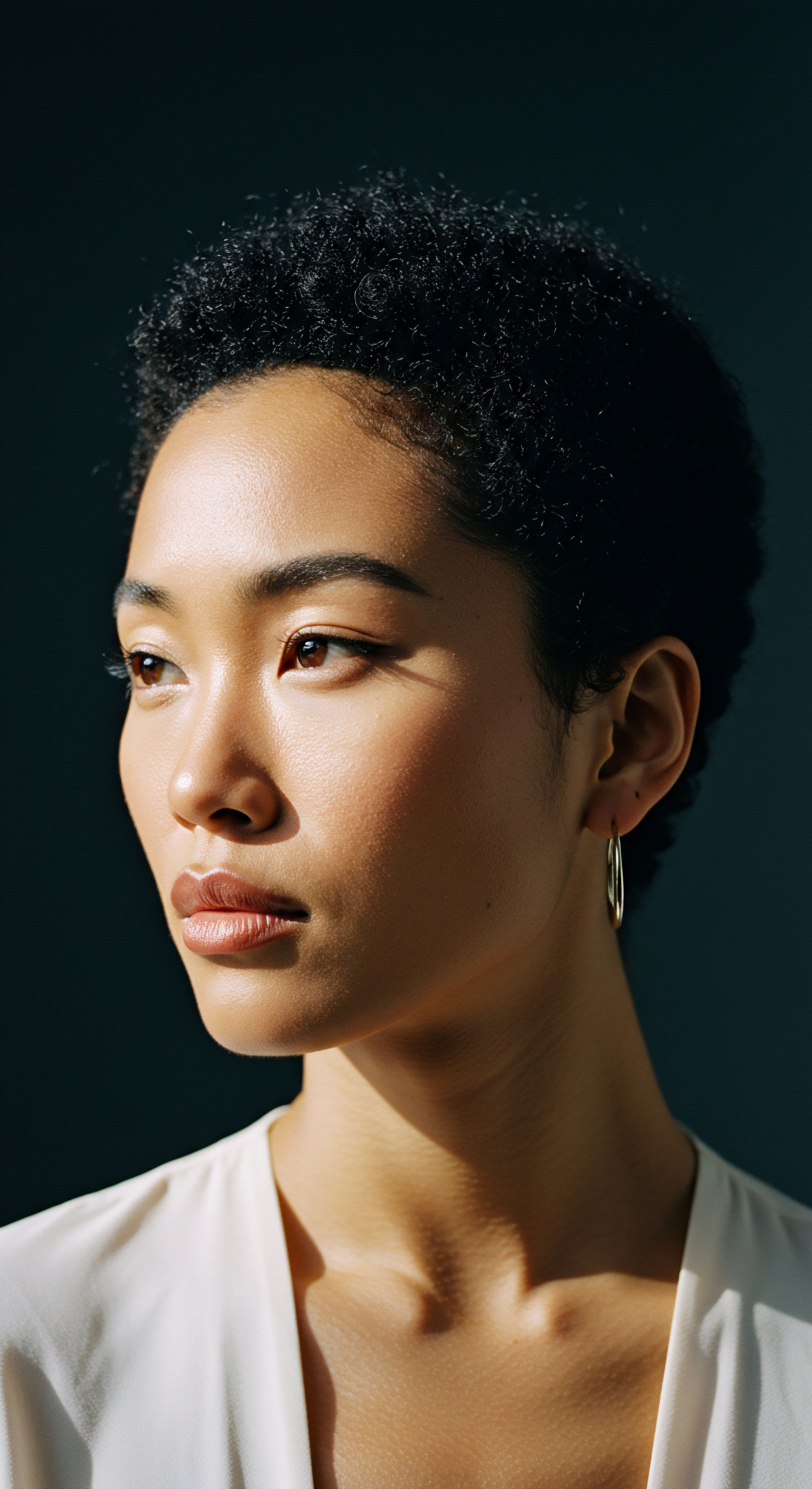
Do Hair Policies Perpetuate Systemic Bias?
Hair policies, particularly those that penalize natural textured styles, often serve as proxies for systemic biases rooted in historical prejudices. For centuries, straight hair has been upheld as the standard of beauty and professionalism in many Western societies, a legacy of colonial aesthetics. This preference was not arbitrary; it was deeply intertwined with notions of civility, intelligence, and social acceptability. Consequently, hair textures that deviated from this norm were often denigrated, becoming symbols of ‘otherness’ or ‘unruliness.’ These historical associations continue to echo in contemporary policy, subtly reinforcing a hierarchy that marginalizes specific hair types and the individuals who wear them.
Consider the impact on professional opportunities. A study published in the Social Psychological and Personality Science journal in 2020 by Dr. Christy L. Glass and Dr.
Alison Cook illuminated a stark reality ❉ Black women with natural hairstyles were perceived as less professional and competent than Black women with straightened hair, and were less likely to be recommended for a job interview. This empirical finding provides a quantifiable measure of the ‘opportunity cost’ associated with hair policies, demonstrating how an aesthetic preference translates into tangible barriers to employment and advancement. It highlights a system where individuals may feel compelled to alter their natural appearance, often at significant personal and financial cost, to gain entry into professional spaces.
The historical roots of hair discrimination reveal a pervasive societal bias that continues to impact professional advancement and personal wellbeing.
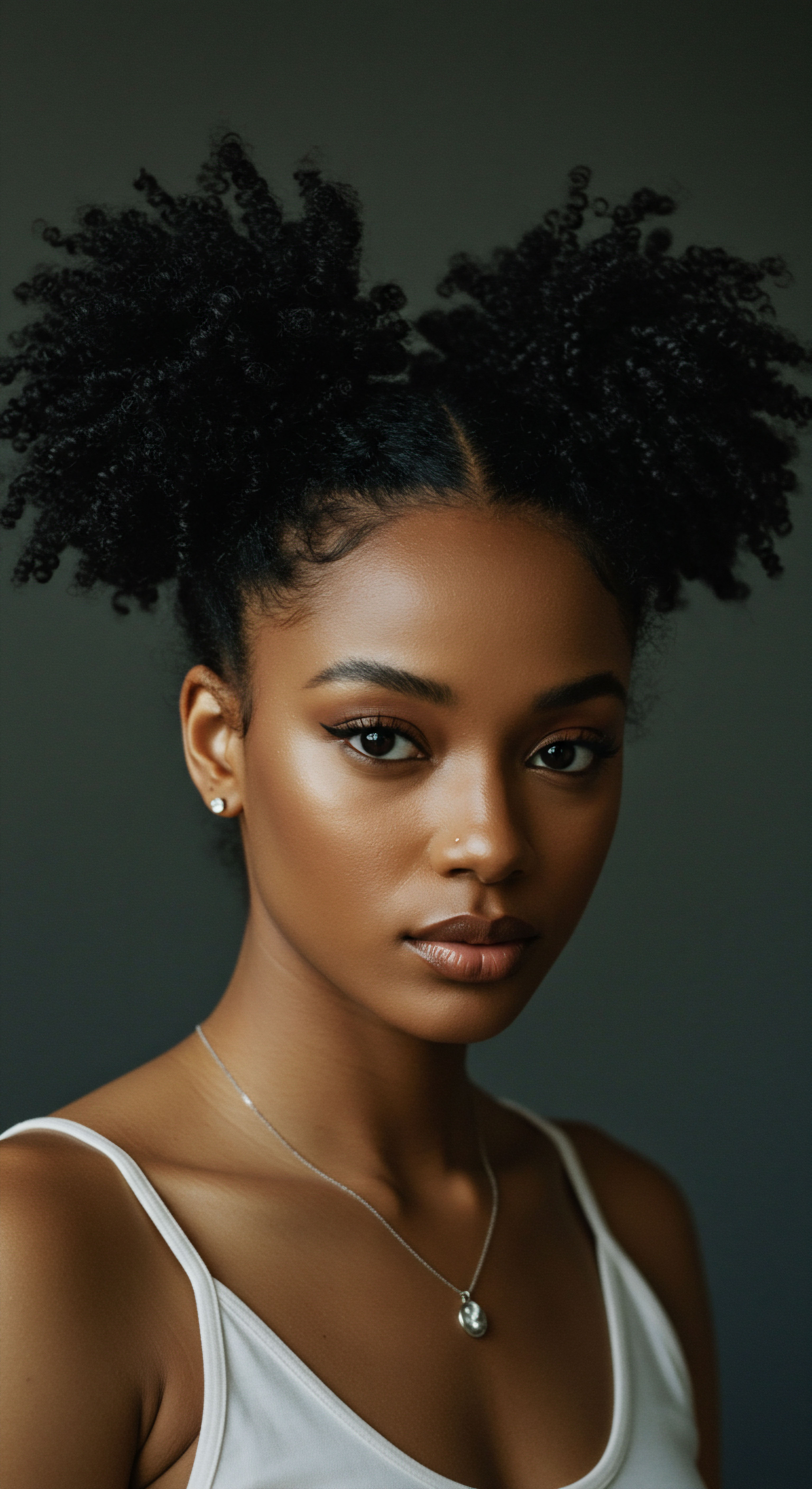
Nighttime Rituals and Self-Perception
The nighttime sanctuary, with its essential sleep protection rituals, becomes particularly poignant when considering hair policies. A satin bonnet or pillowcase is not merely an accessory; it is a guardian, preserving moisture, reducing friction, and preventing tangles for textured hair overnight. These simple, yet vital, practices ensure the hair remains healthy and manageable for the day ahead.
However, if daily policies demand styles that are difficult to maintain overnight, or require extensive morning preparation, the restorative aspect of these rituals is undermined. The pressure to present a ‘perfect’ appearance, dictated by external standards, can lead to chronic stress and a diminished sense of self-acceptance, as the individual struggles to reconcile their natural hair needs with imposed expectations.
The psychological burden extends beyond immediate feelings of self-consciousness. It manifests as a constant vigilance, a need to assess whether one’s hair ‘fits in,’ whether it will be judged. This cognitive load, the mental energy expended on managing appearance to avoid discrimination, can detract from focus and productivity. It can also lead to a phenomenon known as ‘stereotype threat,’ where individuals perform below their capabilities due to anxiety about confirming negative stereotypes associated with their identity group.
Ingredient choices for textured hair are often highly specific, focusing on moisture retention and strengthening. Humectants, emollients, and proteins are selected with careful consideration for the hair’s unique porosity and tendency towards dryness. When policies dictate styles that require frequent use of harsh chemicals or excessive heat, these deliberate ingredient choices are often sidelined, leading to compromised hair health. The conflict between what is genuinely beneficial for textured hair and what is deemed ‘acceptable’ by external standards underscores a deeper disconnect ❉ a failure to recognize the individual’s autonomy and their knowledge of their own body.
| Policy Aspect Restrictions on natural styles (e.g. locs, braids) |
| Impact on Opportunity Reduced likelihood of job interviews, perceived as less professional. |
| Impact on Self-Esteem Feelings of inadequacy, pressure to conform, diminished cultural pride. |
| Policy Aspect Pressure for straightened hair |
| Impact on Opportunity Access to roles perceived as 'corporate' or 'formal'. |
| Impact on Self-Esteem Increased self-consciousness, physical damage to hair, identity conflict. |
| Policy Aspect Lack of policy clarity or bias training |
| Impact on Opportunity Ambiguity in professional advancement, potential for microaggressions. |
| Impact on Self-Esteem Constant anxiety, sense of unfairness, psychological burden. |
| Policy Aspect Policies can create a system where personal authenticity is traded for perceived professional acceptance. |
Policies that mandate hair conformity can create a pervasive sense of inadequacy, compelling individuals to suppress aspects of their cultural identity for the sake of perceived professional acceptance.
The conversation around hair policies also intersects with broader discussions of equity and inclusion. The CROWN Act (Creating a Respectful and Open World for Natural Hair), enacted in various states across the United States, represents a legislative attempt to address this very issue, prohibiting discrimination based on hair texture and protective hairstyles. Such legal frameworks acknowledge that hair discrimination is a civil rights issue, not merely a matter of personal preference. These legislative efforts signify a growing societal awareness that the right to wear one’s hair in its natural state is fundamental to self-expression and equal opportunity.
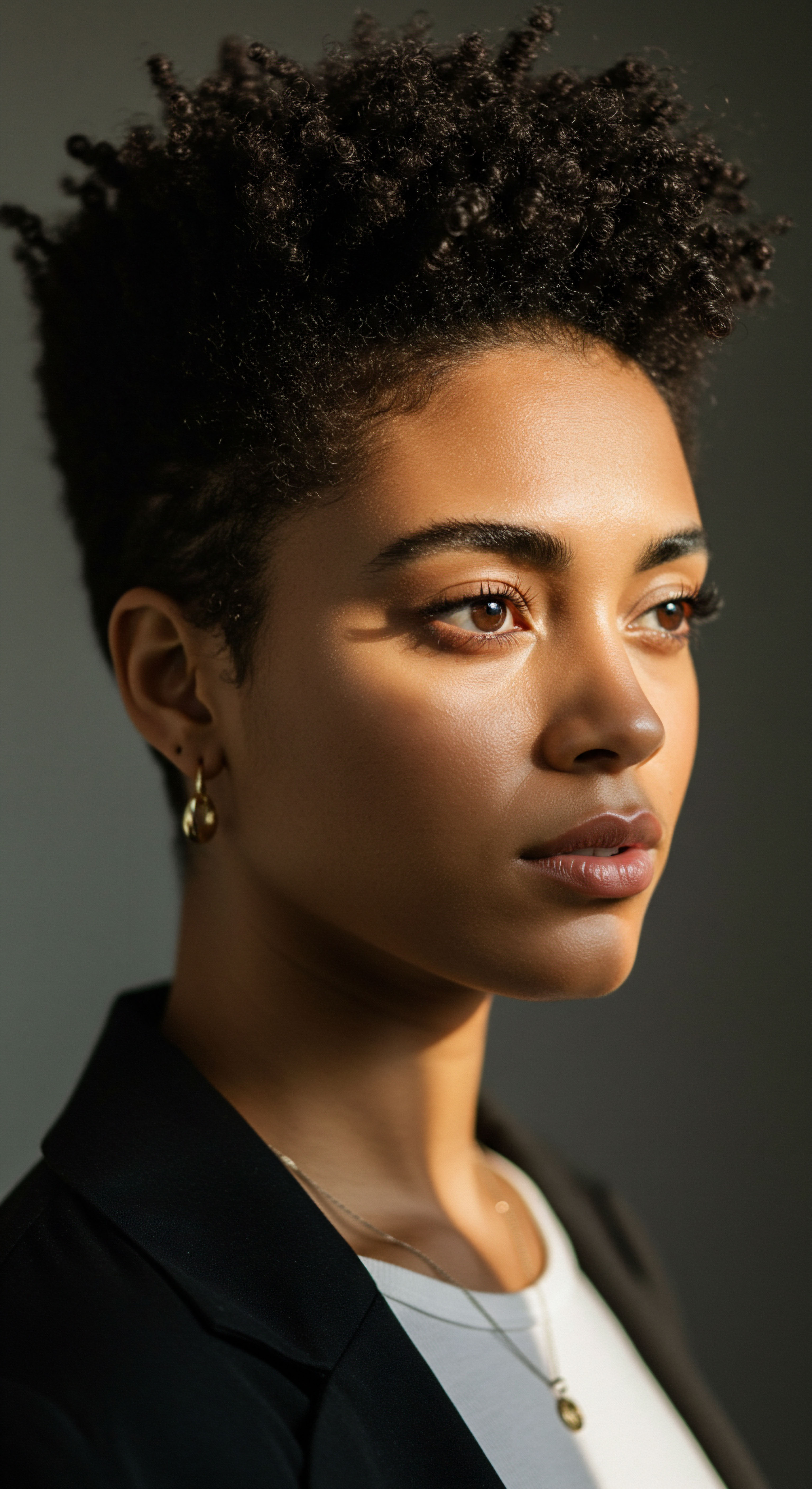
Reflection
The quiet dignity of one’s hair, a personal crown worn daily, stands as a testament to identity, heritage, and the subtle narratives of self. When this deeply personal aspect encounters the often-rigid structures of policy, a complex interplay begins, shaping not only outward appearance but also the inner landscape of self-worth and the pathways to aspiration. The strands we carry, in their unique forms, reflect a spectrum of human experience, each demanding recognition and respect.
To understand the true weight of hair policies is to comprehend their reach far beyond a superficial aesthetic, touching upon fundamental questions of belonging, equity, and the freedom to exist authentically in every space. The unfolding story of hair, policy, and personal flourishing continues, inviting a collective shift towards a more accepting and understanding world.
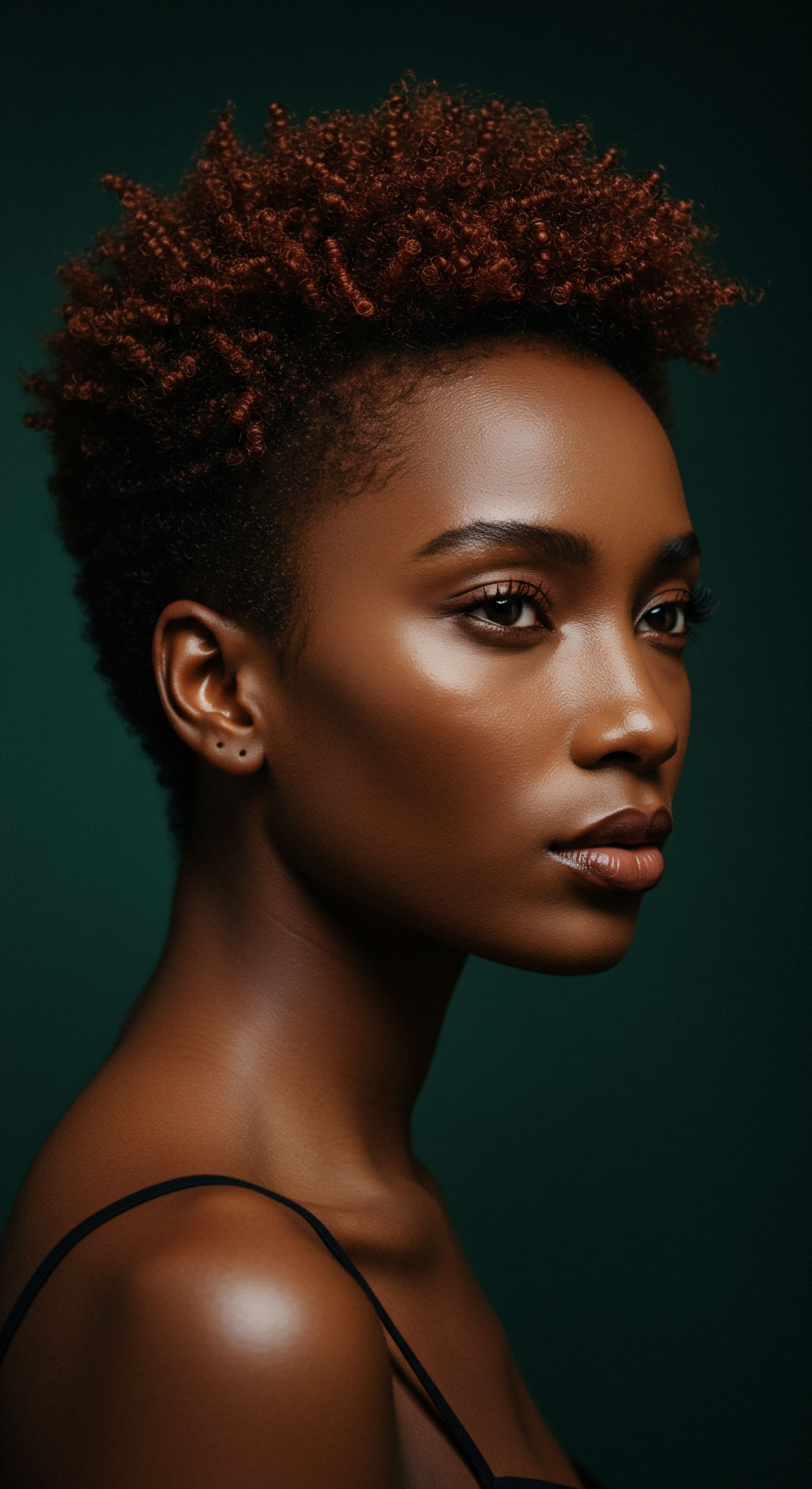
References
- 1. Glass, Christy L. and Alison Cook. “The Hair Dilemma ❉ Conformity, Identity, and the Racialized Experiences of Black Women in the Workplace.” Social Psychological and Personality Science 11, no. 8 (2020) ❉ 1083-1092.
- 2. Byrd, Ayana, and Lori L. Tharps. Hair Story ❉ Untangling the Roots of Black Hair in America. St. Martin’s Press, 2014.
- 3. Patton, Tracey Owens. “The Politics of Black Women’s Hair ❉ Cultural Expression, Discrimination, and the Law.” Rutgers Race and the Law Review 10, no. 1 (2008) ❉ 1-38.
- 4. Russell, Kathleen, Midge Wilson, and Ronald Hall. The Color Complex ❉ The Politics of Skin Color in a New Millennium. Anchor Books, 2013.
- 5. Hunter, Margaret. “Buying Racial Capital ❉ Black Women’s (Re)negotiations of Beauty and the Politics of Hair.” Gender & Society 21, no. 6 (2007) ❉ 828-845.
- 6. Rockquemore, Kerry Ann, and Tracey Laszloffy. Raising Biracial Children ❉ Affirming Identity in a World of Categories. Rowman & Littlefield Publishers, 2008.
- 7. hooks, bell. Ain’t I A Woman ❉ Black Women and Feminism. South End Press, 1981.
- 8. Kalu, Anthonia C. African American Women’s Hair ❉ From Traditional to Contemporary. University Press of Mississippi, 2013.
- 9. Coopwood, Kym. The Curl Revolution ❉ Hair Smart and Hair Happy. Running Press, 2018.
- 10. Powell, Stephanie. The CROWN Act ❉ Protecting Black Hair in the Workplace and Beyond. LexisNexis, 2022.